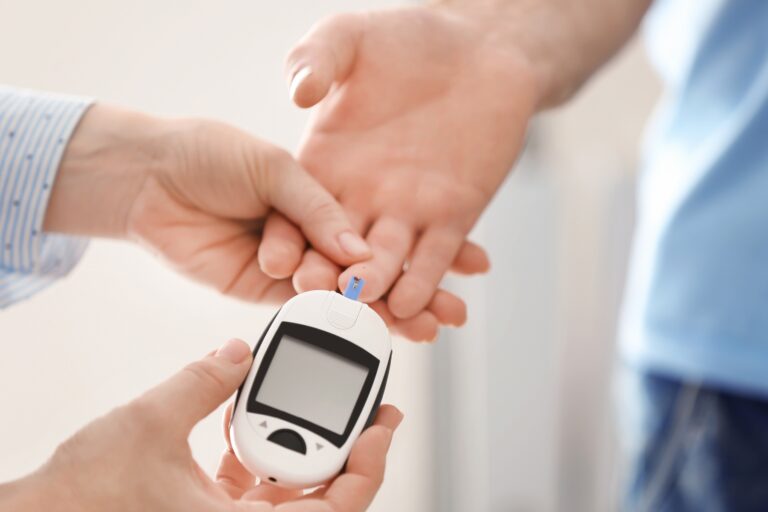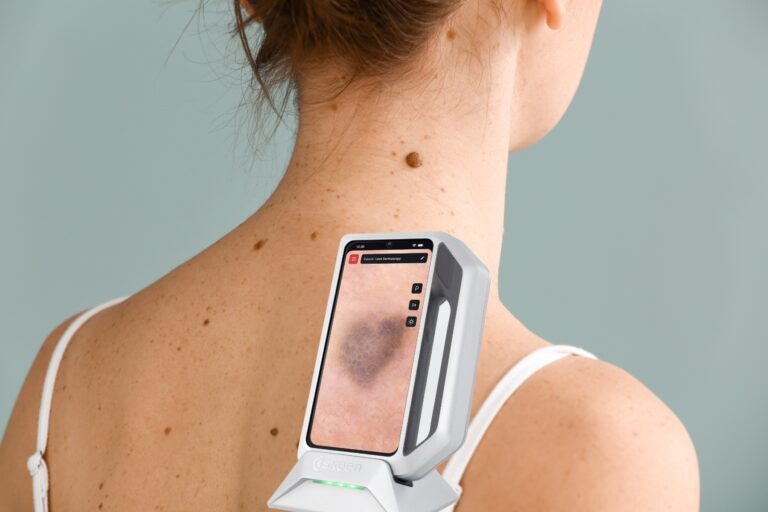October is designated as Pink Month because it is associated with breast cancer awareness. This is a time to emphasize the importance of timely and effective controls, diagnoses, and treatments. Being informed about the possibilities of early detection is crucial for overcoming this disease. In this article, we provide insight into how to detect the signs and symptoms of breast cancer and the importance of regular screening, which are crucial to notice any changes and promote swift action.
Breast cancer is the most common cancer among women in Hungary
In Hungary, more than 7,500 new cases of breast cancer are diagnosed annually, resulting in the death of over 2,000 women, according to WHO. This is also a leading type of cancer disease. Survival rates have doubled in recent decades, primarily due to early detection and treatment. However, many people are still unaware they could be at risk for breast cancer. While breast cancer predominantly affects women, it can also occur in men.
Breast cancer is more likely to occur after the age of 45, with the majority of women diagnosed being over this age. The risk also increases with family history. If a close family member has been diagnosed with breast cancer, the chances of developing it may be higher than average. Regular screening is crucial for individuals with a family history of breast cancer and for those over the age of 30.
Remember the signs and symptoms of breast cancer
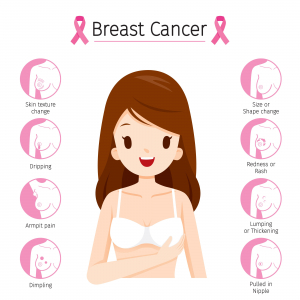 The most common symptom of breast cancer is a lump or thickening in the breast. It may feel like a pea or marble under the skin and can sometimes move around, especially if you press on your chest wall or breathe deeply. The breast lump may be tender or painful to touch.
The most common symptom of breast cancer is a lump or thickening in the breast. It may feel like a pea or marble under the skin and can sometimes move around, especially if you press on your chest wall or breathe deeply. The breast lump may be tender or painful to touch.
In some cases, no lump is found, but there may be other symptoms such as skin irritation or dimpling, redness or flaky skin around the nipple area, or pulling in of the nipple (sometimes called retraction). Some women experience nipple discharge (such as bloody or watery liquid) from one or both nipples.
The breast lump may be detected during self-examination, on a regular medical checkup, or on a mammogram. By mammography screening, doctors can find the early signs of breast cancer, even three years before a lump can physically be felt.
Importance of prevention and early detection
Prevention is a vital step in the fight against breast cancer. There are a few things that you can do to significantly lower the risk of getting breast cancer:
- avoiding excess weight,
- staying active and physically fit,
- not smoking, and
- eating a healthy diet with lots of fruits and vegetables.
The other key element of breast cancer prevention is regular examination and screening. The earlier the tumor is discovered, the better the chances of recovery and survival! The disease can most likely be cured if it hasn’t spread throughout the body or metastasized from its original site to distant organs such as bone or lung tissue.
Every woman should have regular breast cancer screenings after a certain age:
- Below the age of 40: regular breast ultrasound examination (mammography is not necessary at this age, but it is available upon request).
- Between the ages of 40-45: breast ultrasound examination annually, mammography screenings every two years.
- Above 45: Mammography screenings and ultrasound examinations should be taken annually.
How is breast cancer detected?
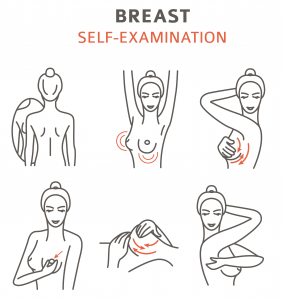
Regular manual checkups
It is essential to perform manual self-examination at least once a month. Take at least 20 minutes to thoroughly examine and feel each breast for possible lumps, distortions, or swelling. If you notice any abnormalities on your breasts, such as lumps or thickening of tissue, consult your doctor immediately.
Your gynecologist or family doctor can check your breasts during the regular physical exam, which may help you find breast cancer early on. It involves checking for lumps, wrinkles, dimples, or redness on the skin of your breasts. This is called a clinical breast exam. The doctor can also teach you the proper way of self-screening. If it’s necessary, your doctor may recommend further testing.
Breast cancer screening
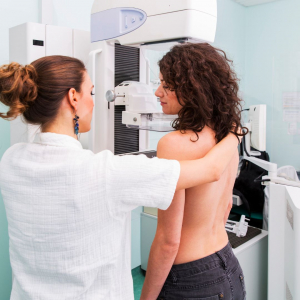
Mammography
Mammography is recommended for everyone at increased risk of developing breast cancer, especially women over 45. A mammogram is an X-ray examination of the breast. During the procedure, the patient is placed in a compression device that squeezes the breast between two plates. The compression makes the breast softer and more accessible to position into the compression device. An X-ray image is then taken of the breasts from different angles.
Ultrasound
Breast ultrasound is a safe, painless imaging test that uses sound waves to get pictures of the inside of your breast. It can show cysts, fibroids, and lymph nodes that mammography cannot detect. The examination determines whether there are any abnormal areas in the breast that may need further evaluation. By this, other diseases of the breast can be detected, and it is beneficial for women who have dense breast tissue (which makes it harder to see abnormalities on a mammogram).
What happens if your screening test is positive?
Examination results are mailed to you within one business day. Our doctor will reach out to you and talk about any abnormalities detected during the examinations and may refer you to a specialist for further evaluation or recommend specific treatment if necessary.
Breast cancer awareness: Early detection can save lives!
Know that breast cancer is the most common cancer in women, but it is treatable if detected at an early stage. Regular manual breast examinations, mammography, and ultrasound screening are essential, especially over the age of 45. Screening is vital for early detection, which can increase life expectancy and avoid suffering from a disease that could have been cured. If doctors detect tumors when they are small enough to be treated, they are much less likely to spread and cause serious health problems. Without this, the diagnosis is often made only after the tumor has reached an advanced stage of growth.
Our annual gynecology screenings include a manual breast examination (when our gynecologist can also teach how to do it yourself), additionally we provide complex mammography and breast ultrasound examinations. A thorough breast examination usually takes about 15-20 minutes and allows accurate and non-invasive detection of the early signs and symptoms of breast cancer, even in dense breasts.
Feel free to contact us if you have any questions, or make an appointment for a checkup.
Updated: October 2024


